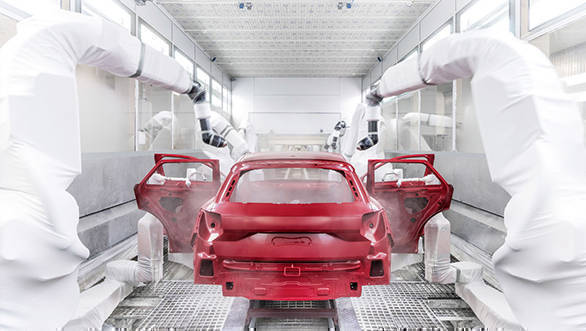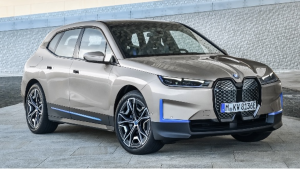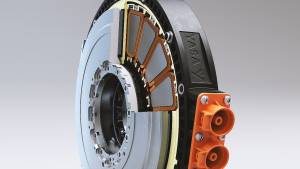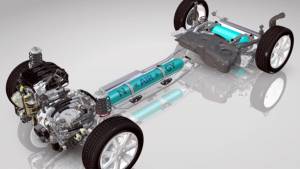Simple Tech: Automobile painting process explained
Painting. The process of adding colour to something. Simple, yes? But when it comes to automotive painting, it becomes rather more complex. Because only at the very basic of levels is painting a car about changing the colour of the metal underneath. It also has to last forever, prevent corrosion and deterioration in the face of chemicals, acidic rainwater, dirt and so many other hazards. And if it does its job well, you don't have to deal with rust or discolouration.

To do its heroic task, the paint needs to be durable, naturally. But it also needs to adhere to the body, else we'll have it chip off. It must repel water because if moisture enters underneath, it can cause corrosion. It's a big ask and this is where the science of automotive painting comes in.
First, the complexity of the task at hand is why a lot of research goes into the manufacturing and application of paints. But since the task is so multi-layered, the paint on your car or motorcycle is as well nowadays. There are layers, painters call them coats, that protect the body from corrosion but don't add any aesthetic value. There are others that have aesthetic value and still others that protect these two layers. It is critical to get the coats right because in some environments, like coastal cities, rust and corrosion is drastically accelerated.
The process begins with surface preparation, which is exactly what the process' name suggests. This is a very important process because normally a vehicle is painted for life. It must not peel or chip for a very very long time. So surface preparation starts with machines tasked with cleaning up the bare metal of the car. The two common ways for this cleaning is either a high-pressure water jet or a high-pressure jet of sand or grit to gently abrade any dirt or residue from the manufacturing process off. The idea is to offer a clean, smooth, bare metal surface so that the paint 'sticks' to it evenly.
Next, the body is dipped in the phosphate tank. The phosphate tank contains phosphate salts (usually with manganese or zinc) and is used to treat steel (and a few other metals). The reaction makes for a rough layer of small crystals to form on the metal. These crystals will form a sort of 'magnetic' layer that the paint will stick to well and evenly. The phosphate layer also has excellent anti-corrosion properties. Phosphates are applied by dipping the body into the tank but can also be sprayed on.
Then the body moves on to the first of the coats, the e-coating or electro-coating process. Here, the body is dipped into a solution and then a high direct current is applied which causes the car body to now attain a charge a charge opposite to the paint which will be applied later. Post application of the e-coat, the body is taken out and extra solution is washed off. Then comes the first of the ovens where the body is dried at 200°C to remove any excess solvent as vapour. The factory usually has stringent measures to prevent these vapours from entering the airstream without treatment.
Now finally, we are ready to actually paint the car. The first coat is the primer the first line of defence for the body. The primer has to prevent corrosion, scratches, chipping, and the effects of heat and UV rays from reaching the body. A secondary but vital function is to smoothen the body and cover up any surface defects left after the cleaning process. Once again, the process ends with a trip to an oven, this time at 150°C to ensure a proper bond between primer and e-coat. At this point, the body is still just a (usually) grey shell.
The base coat is next and this is the first layer of colour - the final colour of the vehicle. Manufacturers usually choose between the basic solid paints and paints with aluminium chips in them metallic paints and pearlescent paints which produce the pearl effect via a special pigment. Most big manufacturers use machines for this entire process today because the paint robots produce more even coats with less wastage.
The final coat is called clear coat, a transparent layer that is chemically stable because it is the boundary layer. The clear coat has to protect the layers under it from bird doo-doo, sun, heat, dust and so forth. Once the clear coat is done, the body returns to the drying oven for the final time.
The high-end manufacturers will also add manual or automated systems that check the quality of the paint depending on the price and position of the automobile in question. To ensure that the quality check finds the very minimum of errors, the paint process is highly automated and more importantly, sealed off. The rooms are strictly temperature and humidity controlled. Paints themselves are now far more environmentally safer, but the process is very, very intensive in its requirements at every level. And you thought painting was just about colours and brushes, eh?














